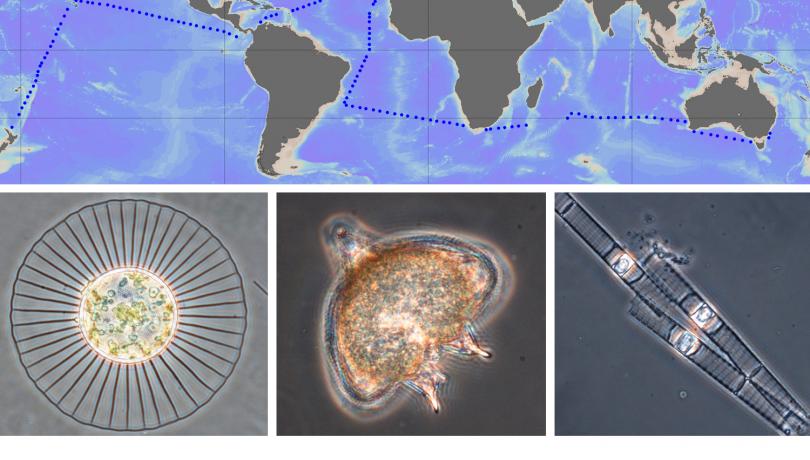A study conducted by researchers at the Department of Biology and Oceanography of the ICM provides new clues about the distribution of phytoplankton in the oceans. The samples were collected during the Malaspina expedition, in 145 stations located around the tropical and subtropical belt of the Atlantic, Indian and Pacific oceans. "This is a work performed along an extensive circumnavigation of the world's oceans that includes relatively understudied areas", says Marta Estrada, lead researcher of the study, recently published in the journal PLOS One.

A study conducted by researchers at the Department of Biology and Oceanography of the ICM provides new clues about the distribution of phytoplankton in the oceans. The samples were collected during the Malaspina expedition, in 145 stations located around the tropical and subtropical belt of the Atlantic, Indian and Pacific oceans. "This is a work performed along an extensive circumnavigation of the world's oceans that includes relatively understudied areas", says Marta Estrada, lead researcher of the study, recently published in the journal PLOS One.
Sampling, carried on board the BIO Hesperides between December 2010 and July 2011, coincided with summer and spring in the visited hemispheres, when the turbulence of the water column is minimal. Under this regime, water is arranged in layers that determine the vertical distribution of the different species of the phytoplankton community. In general terms, the study shows that water is depleted of nutrients in the upper layers, while between 30 and 160 meters depth, depending on the sampled region, it shows a peak of chlorophyll that reflects a high photosynthetic activity. "The most striking composition contrast was found between the phytoplankton communities of the upper layers and those corresponding to the chlorophyll maximum depth", says Estrada.
In this context, based on the definition of groups of taxa that tend to occur together, the researchers found greater differences in the composition of phytoplankton assemblages living at depths some tens of meters apart, than between assemblages separated horizontally by hundreds or thousands of meters. "With this result we find that the structure and composition of phytoplankton communities are comparable over extensive transects through tropical and subtropical regions of the world's oceans", says the researcher, as one of the main conclusions of the research.
Common methodology
Besides the extension of the cruise, another aspect that added great value to the obtained data is the use of the same methodology for all samplings. Within this framework, in order to obtain reliable information of the phytoplankton community, scientists observed and identified organisms under the microscope (the study focused on microalgae that could be classified morphologically using this methodology). These analyses allowed the researchers to observe that, in general, the phytoplankton community was dominated by species of dinoflagellates, other flagellated microalgae and coccolithophores, which are covered with plates of calcite. Interestingly, the diatoms, indicators of high production, were only abundant in areas such as the Equatorial Pacific Upwelling , where water circulation brings nutrient-rich water close to the surface.
The study also showed differences among the phytoplankton communities of the three visited oceans, the Atlantic, Indian and Pacific, a finding which appears to be due to a combination of ecological and historical factors.
The work has implications for biogeochemical studies, which deal with the interaction between organisms, and the geological and chemical environment. Many of these studies are based on the use of global models of the marine ecosystem which require information on the composition and distribution of phytoplankton. Some of the groups studied in the Malaspina expedition can provide information in this regard. "This is the case of diatoms, responsible for a high proportion of carbon fluxes, the coccolithophores, which precipitate calcite to form the plates that cover them, and dinoflagellates, which can migrate vertically in the water column", concludes Marta Estrada.
Paper
Marta Estrada, Maximino Delgado, Dolors Blasco, Mikel Latasa, Ana María Cabello, Verónica Benítez-Barrios, Eugenio Fraile-Nuez, Patricija Mozetič, Montserrat Vidal. "Phytoplankton across Tropical and Subtropical Regions". PLoS One. 2016 Mar 16;11(3):e0151699. doi: 10.1371/journal.pone.0151699.